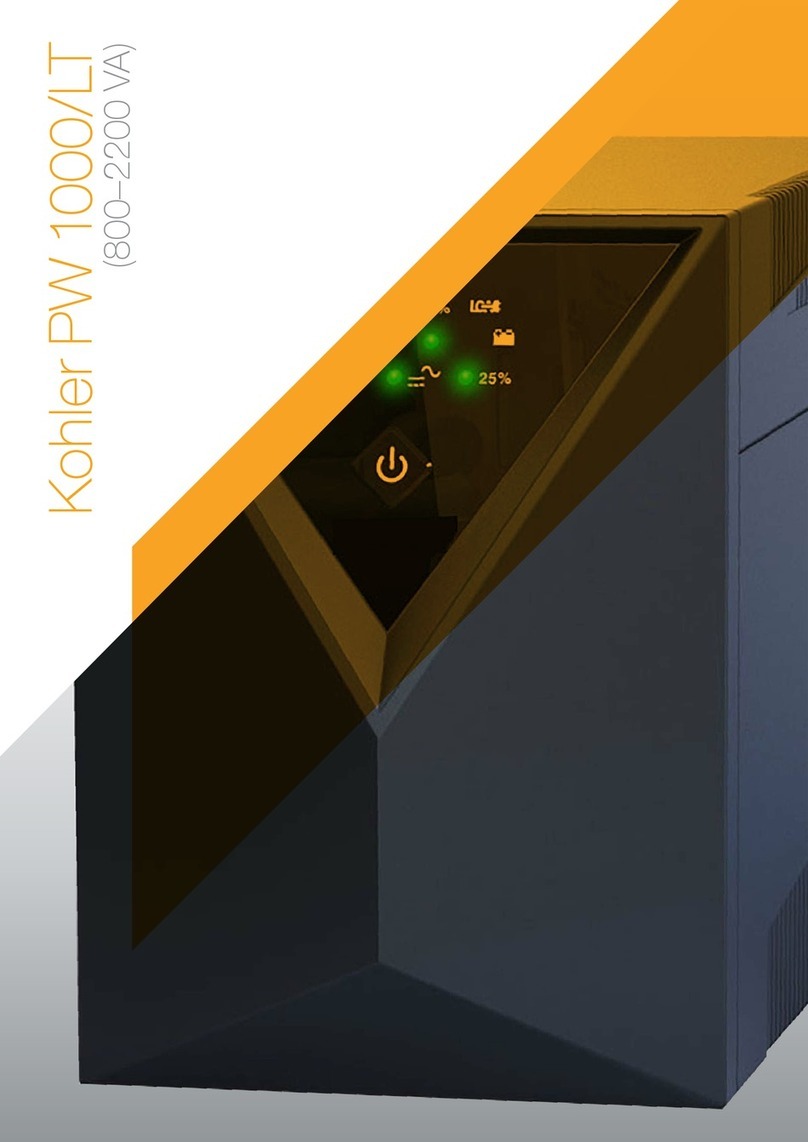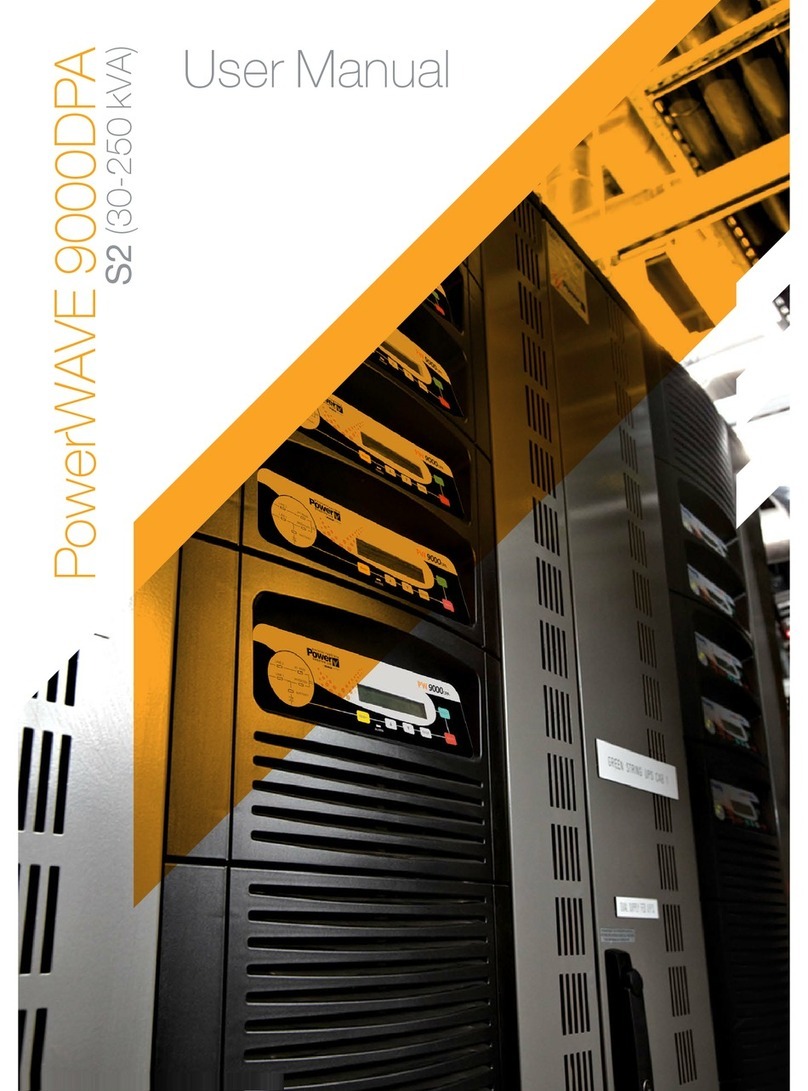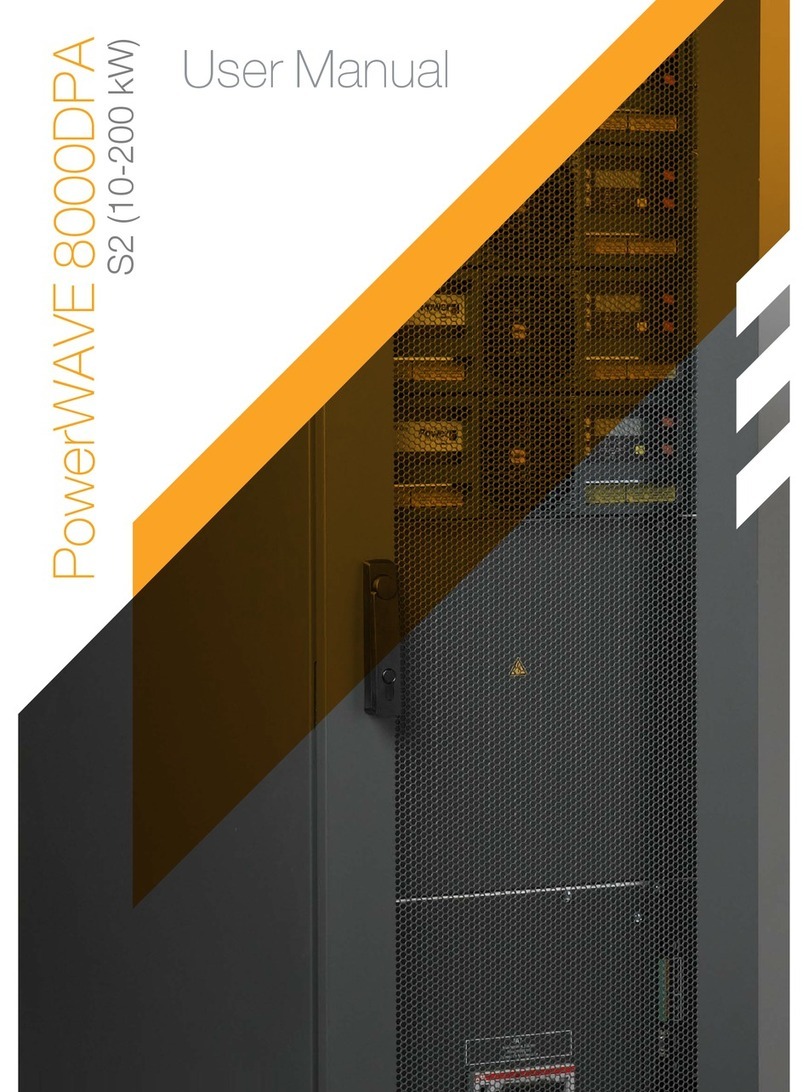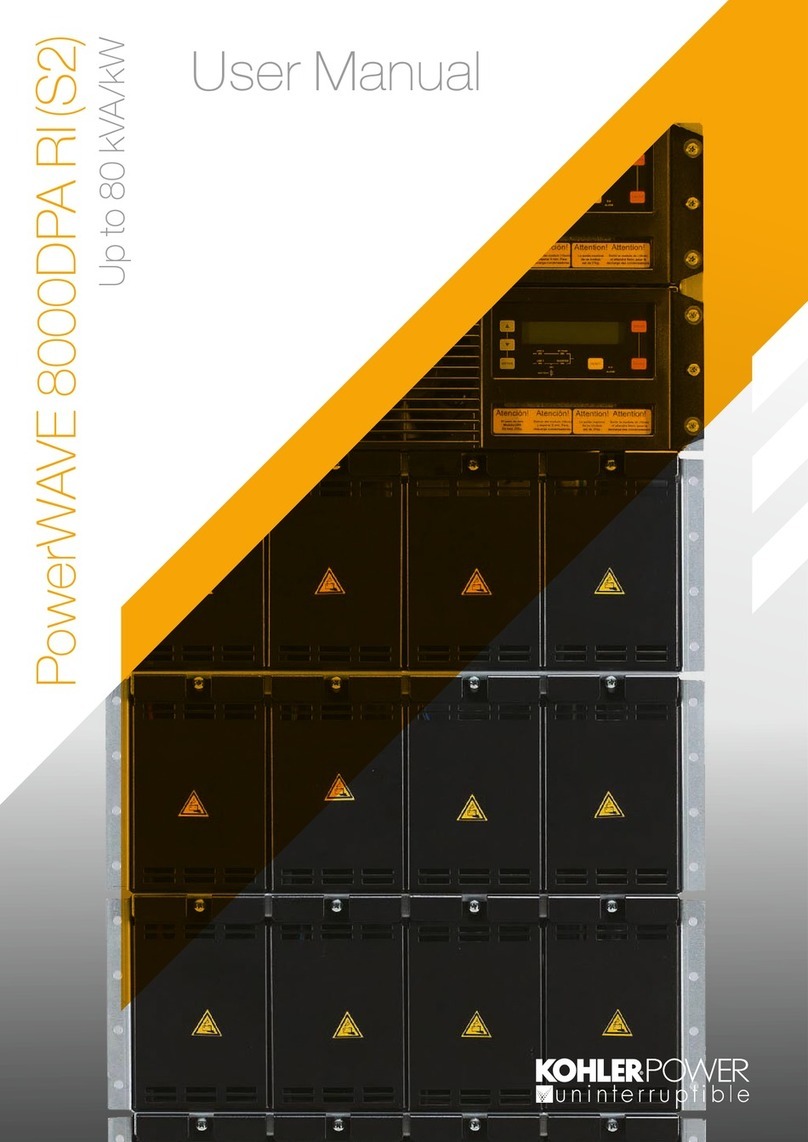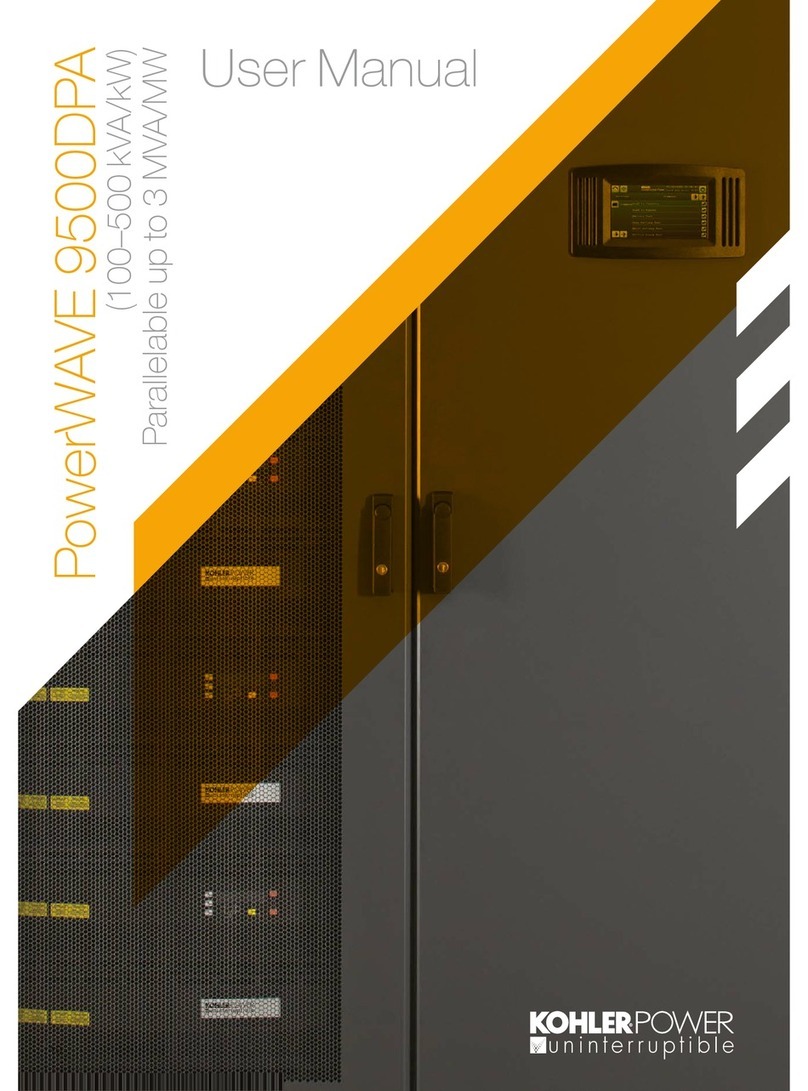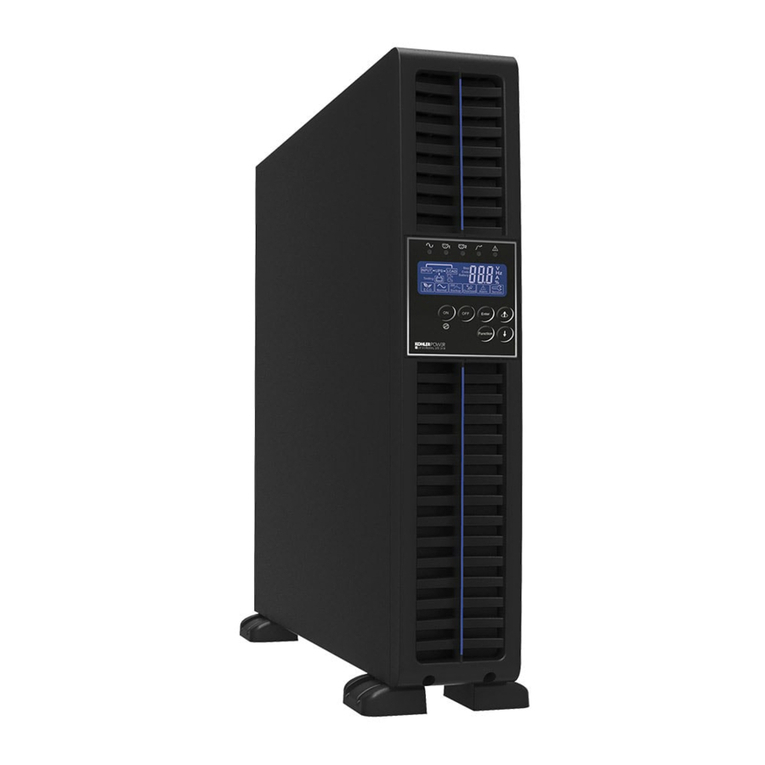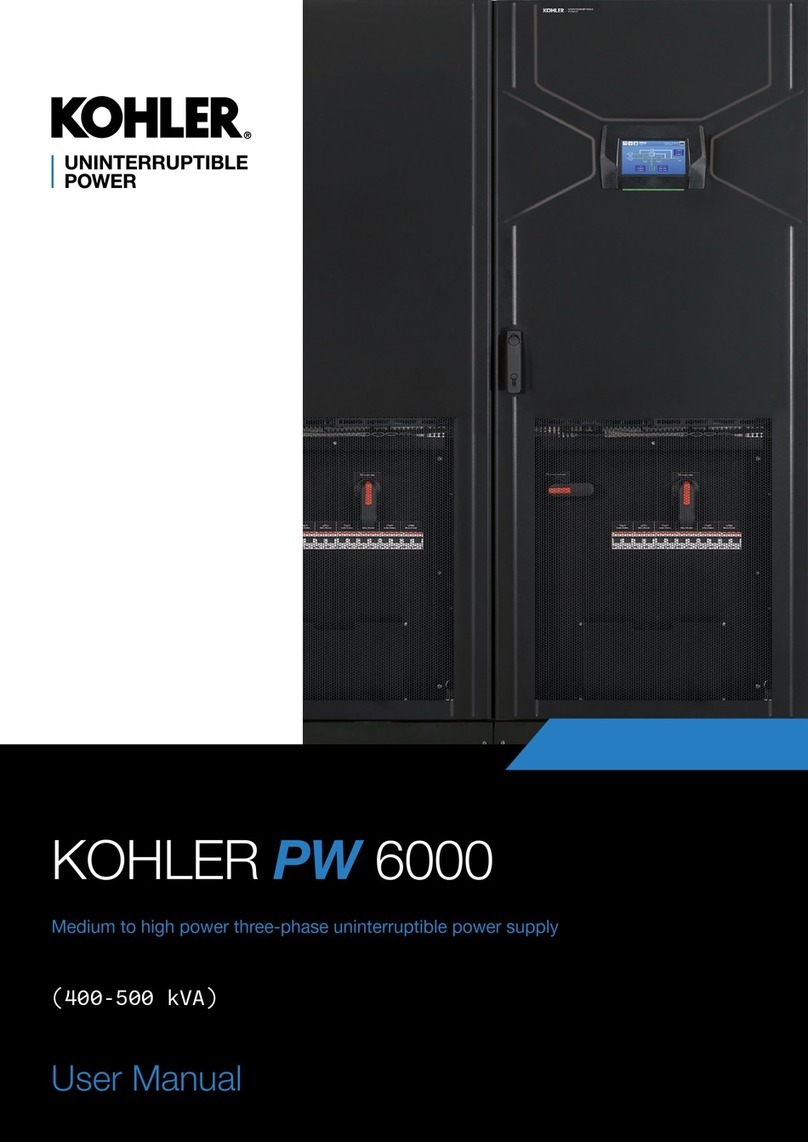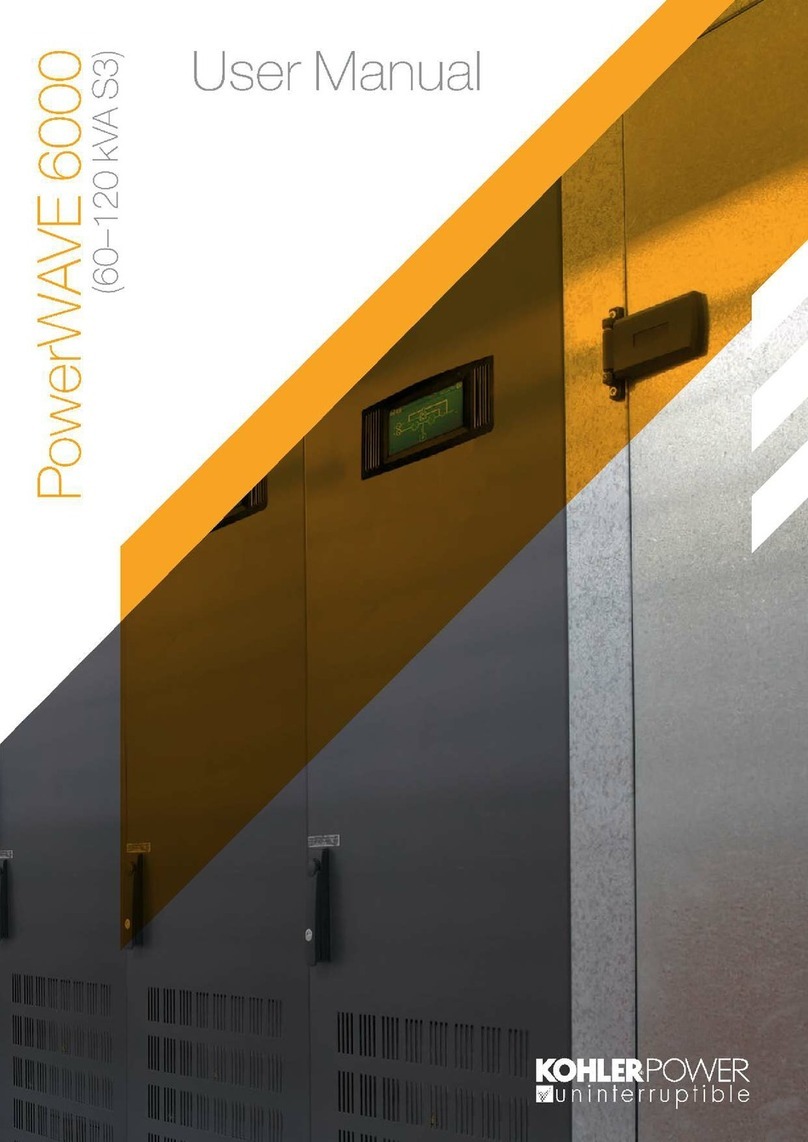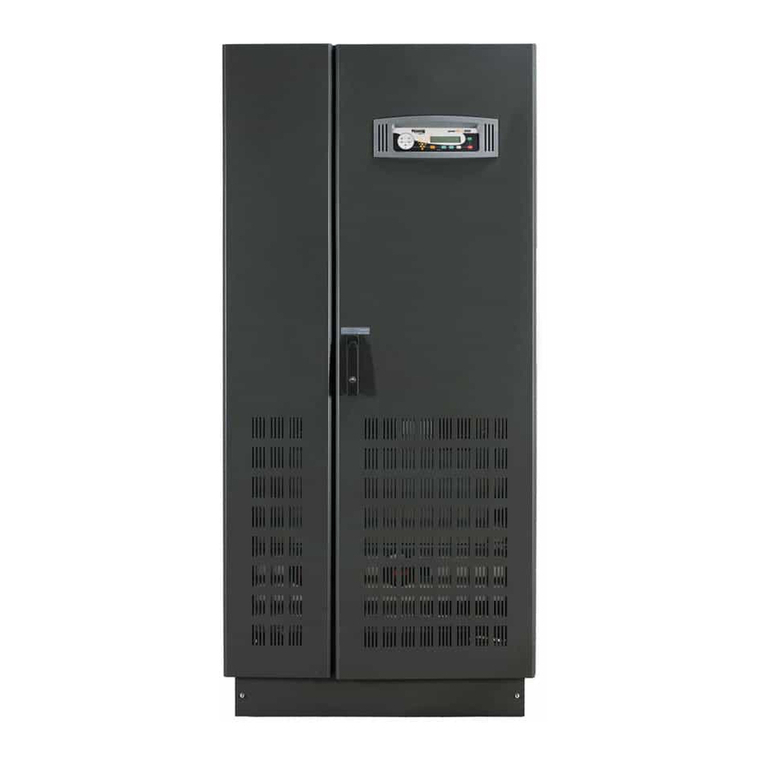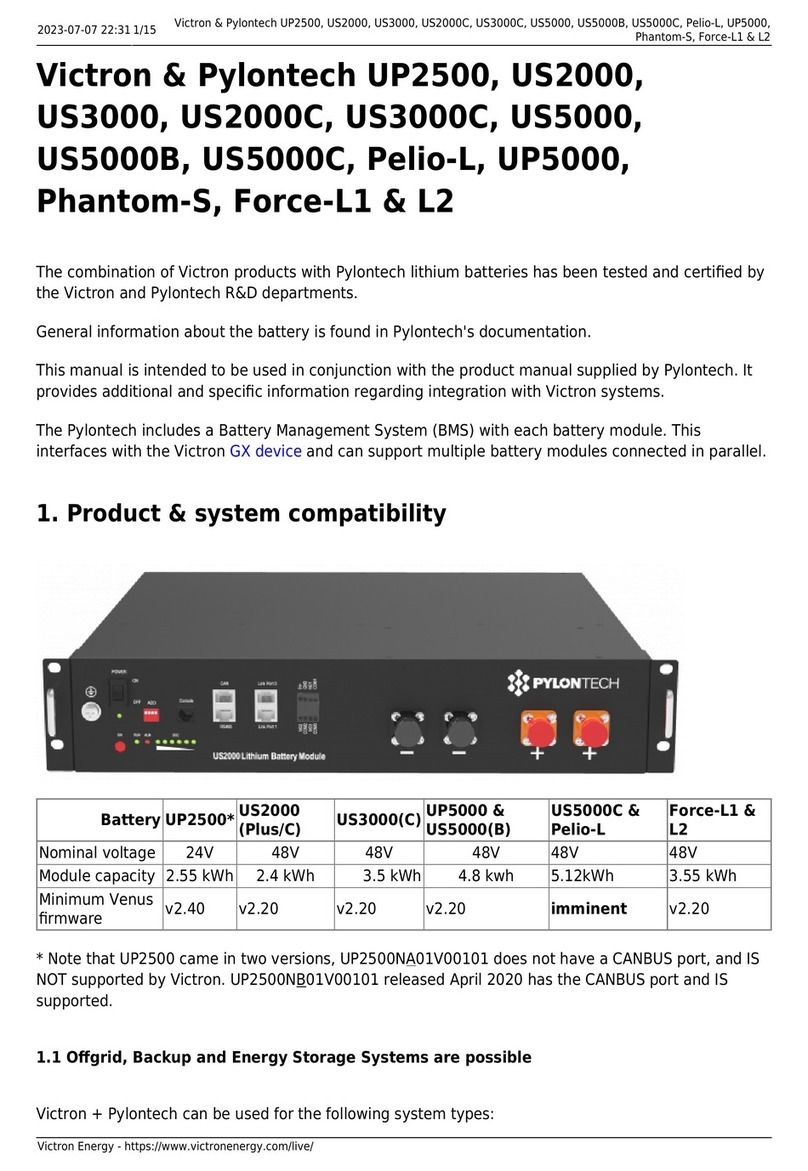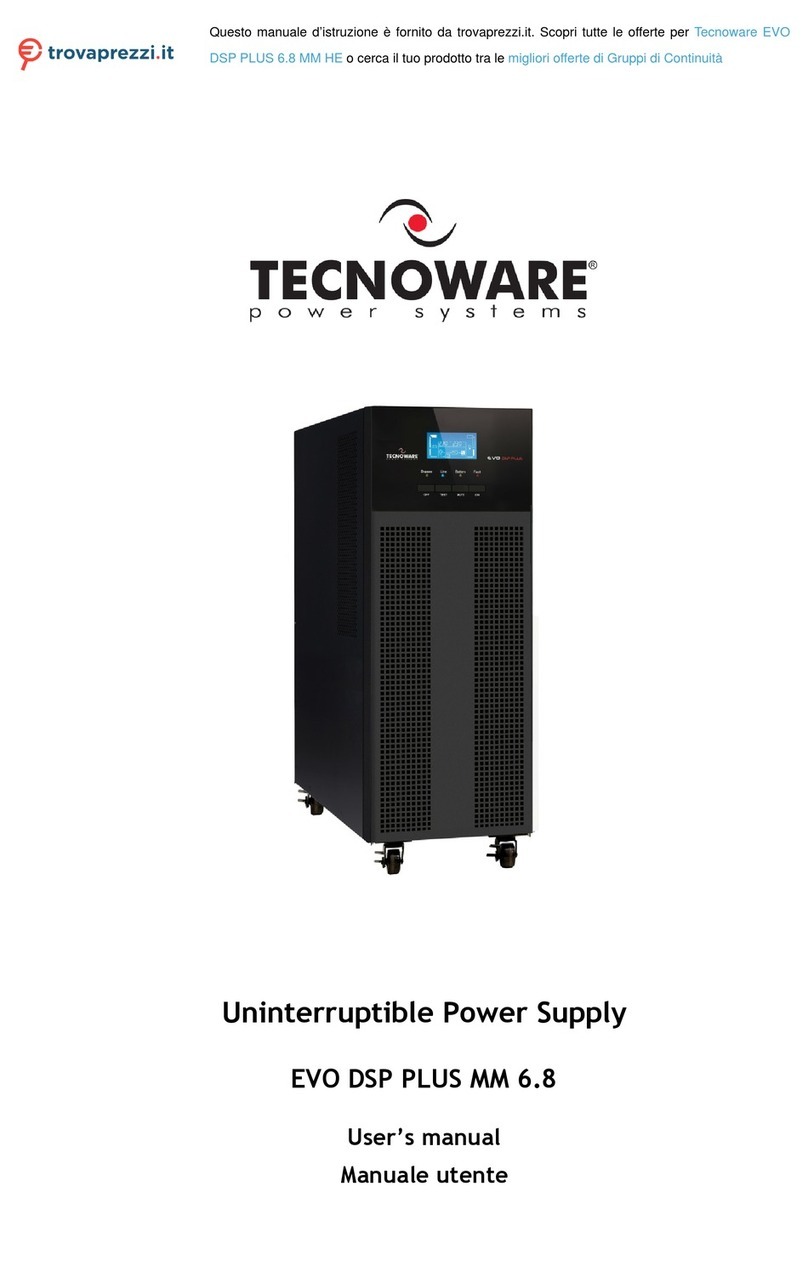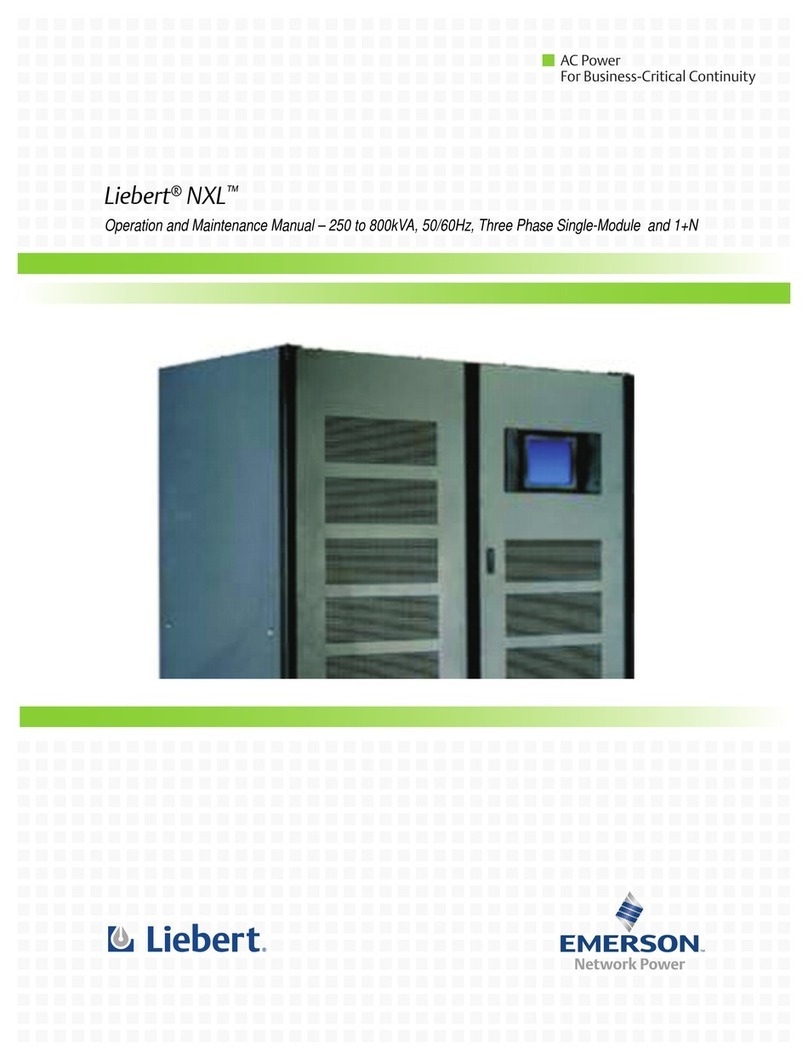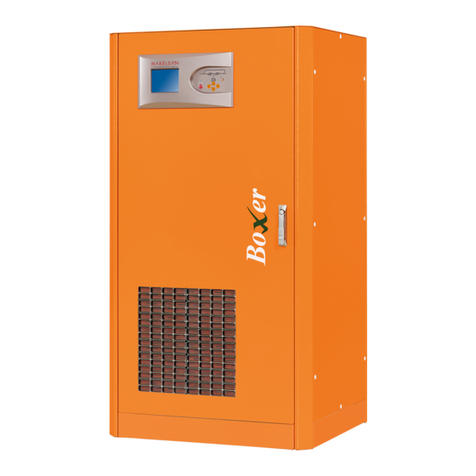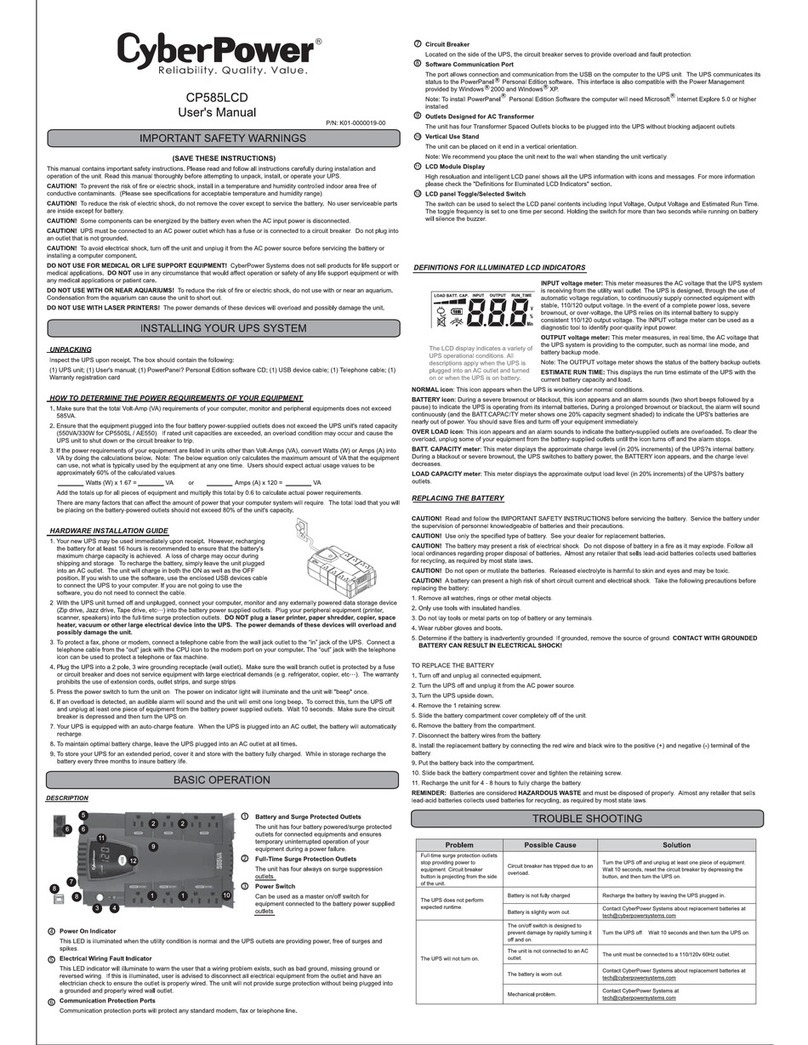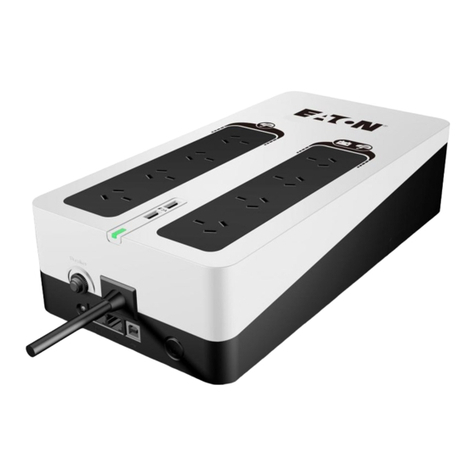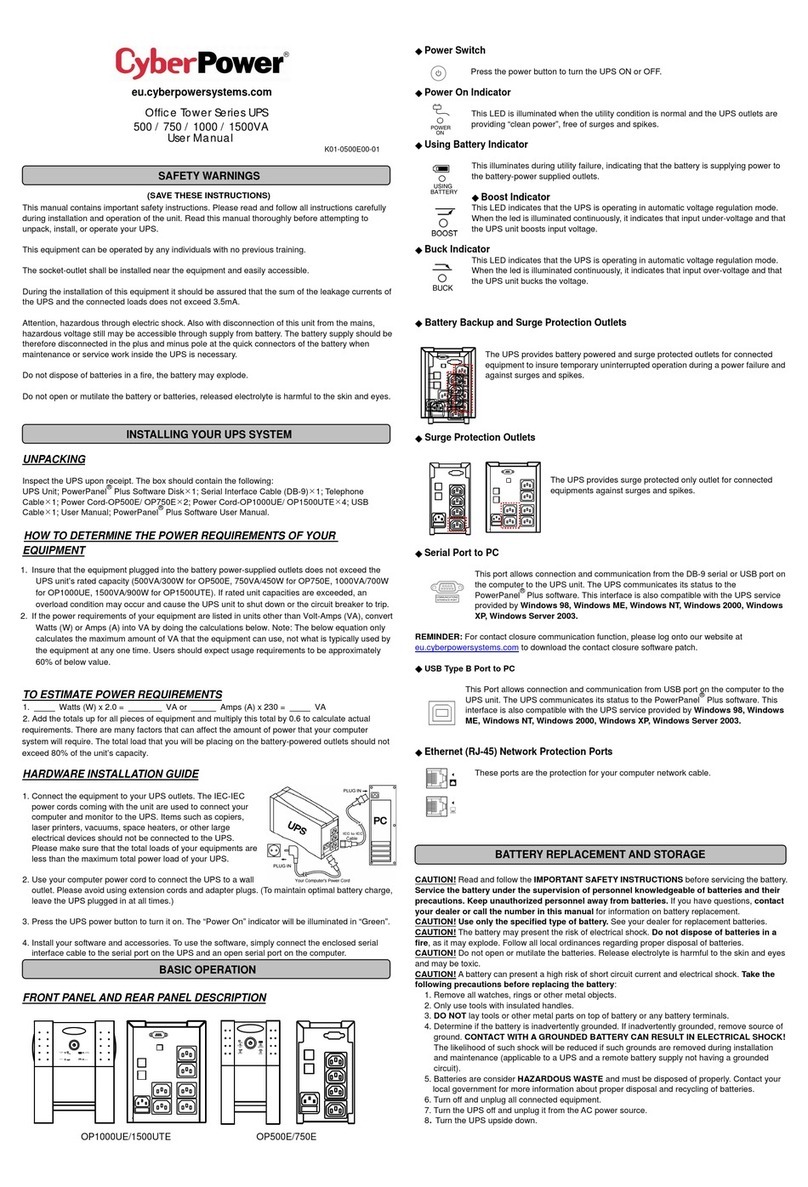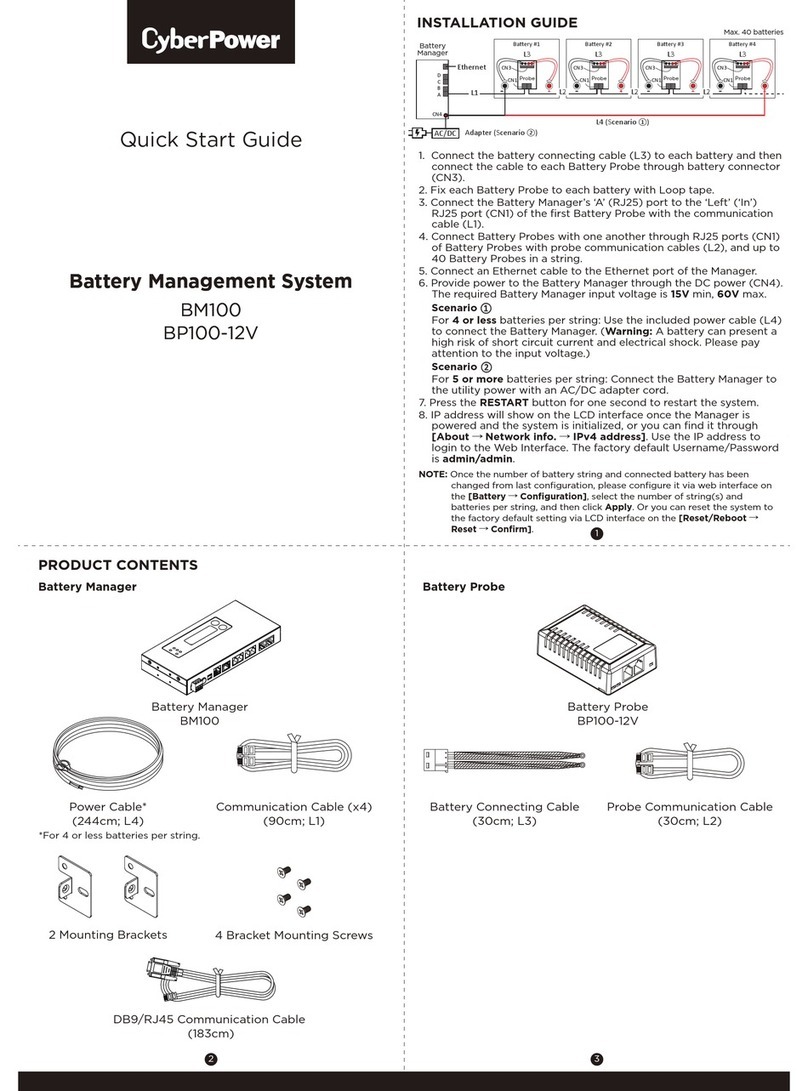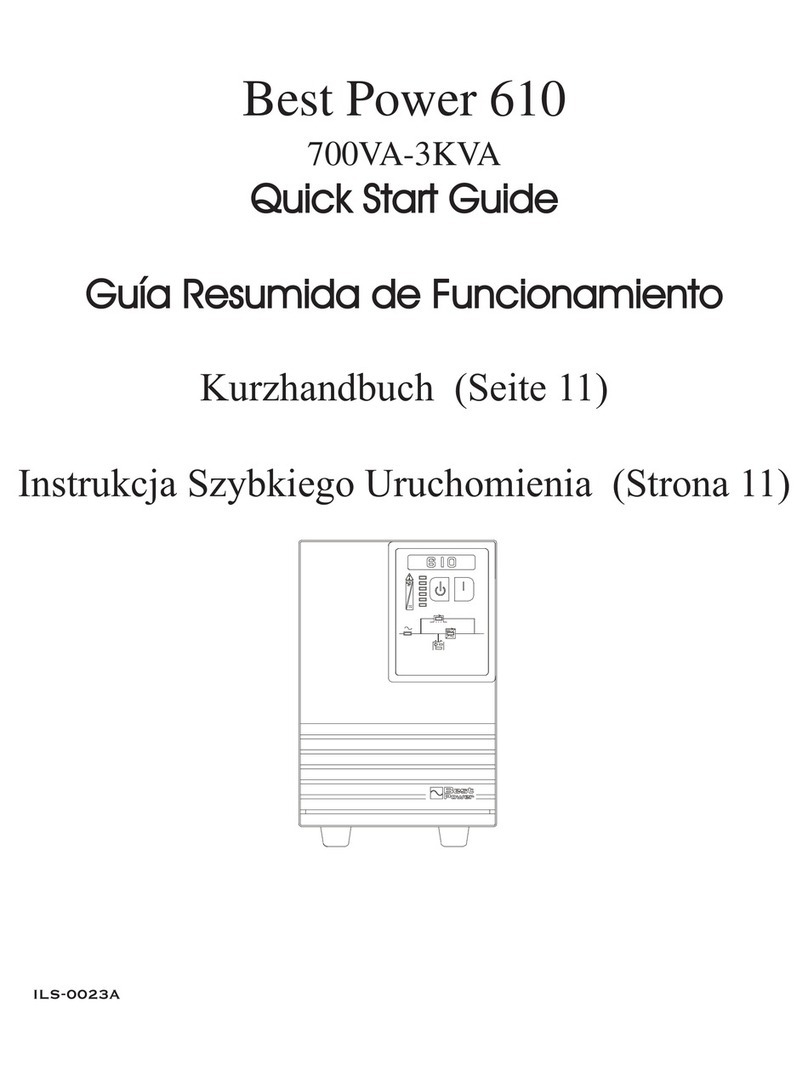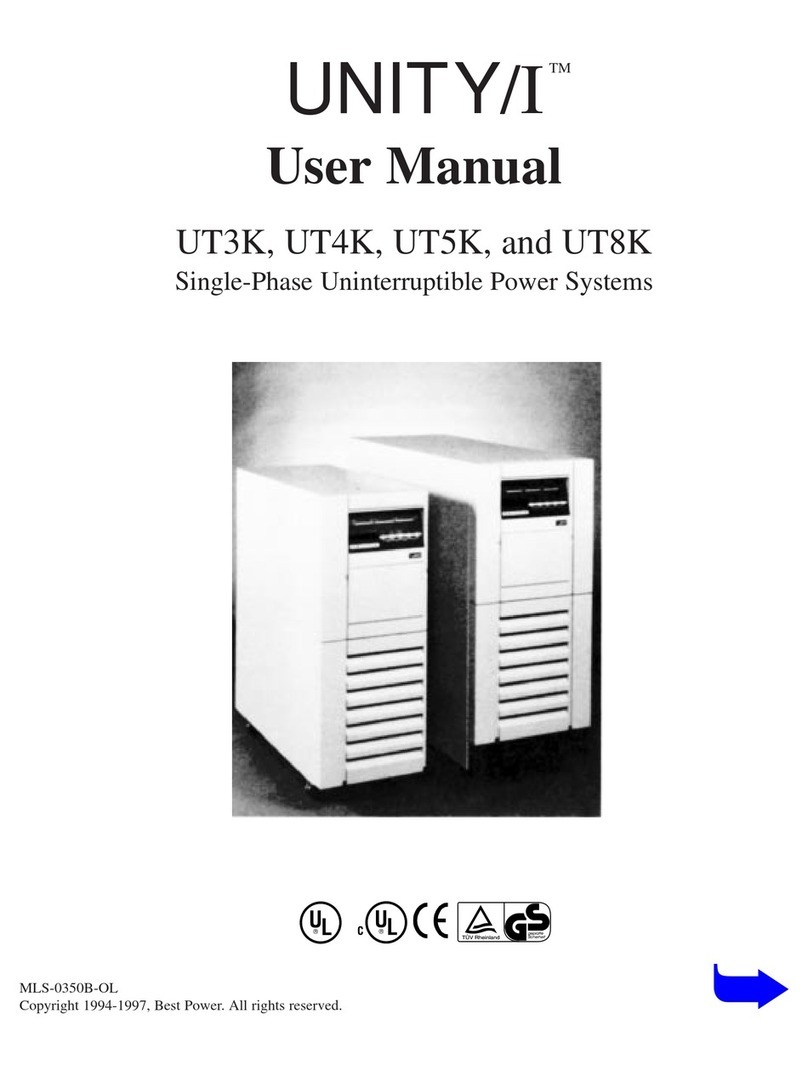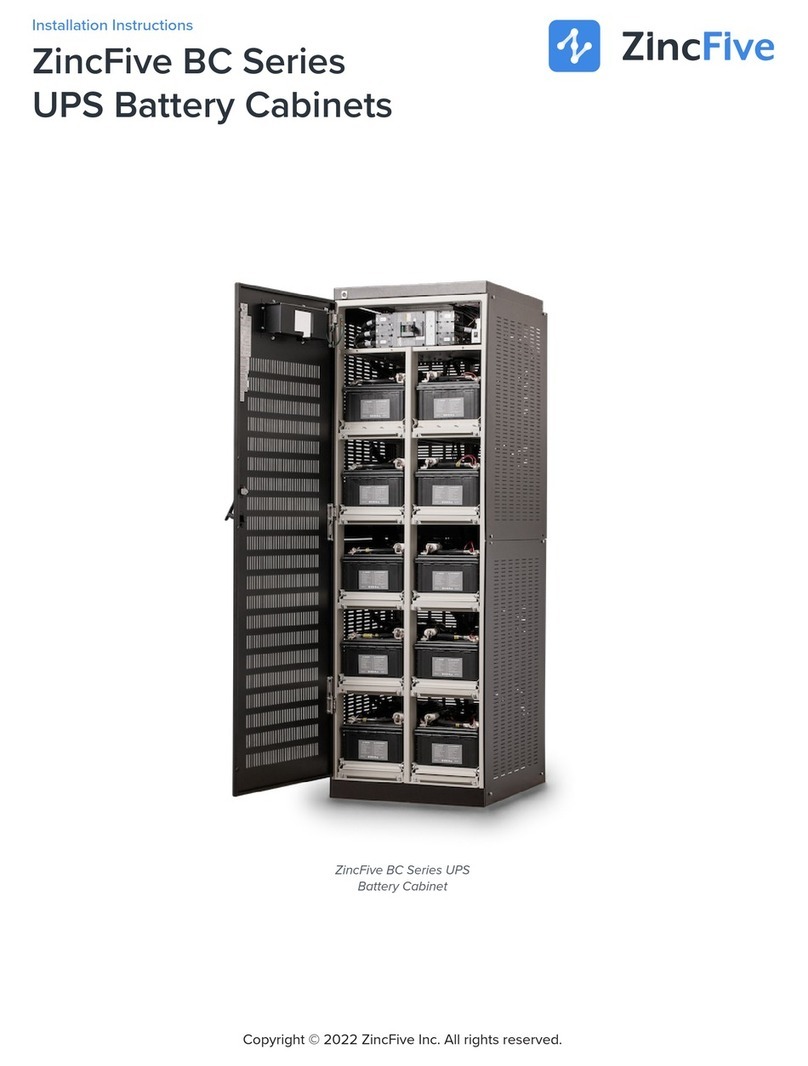
3© 2023 Kohler Uninterruptible Power 29/11/23
2: General Description
2.2.1 Single/Multi-cabinet configurations
The Kohler PW5000/TP UPS may be configured to operate as a single cabinet or several (up to 20) cabinets can be
connected in parallel to operate as a multi-module UPS system. A multi-module configuration is selected either to increase
the system’s total power capacity or to provide module redundancy. This manual describes the installation, configuration
and operation of both single and multi-module systems.
Note: Although the UPS single/multi configuration can be modified in the field it is generally specified on ordering so that
the module can be configured and fully tested in the factory prior to despatch.
2.3 Advanced Design Features
2.3.1 Input booster technology
The UPS module’s inbuilt advanced booster technology results in a perfect sinusoidal input power quality at 0.99 input
power factor with a harmonic content of 3% THD(i). This leads to a more reliable total system operation and savings in
generator and transformer sizing, as losses in the windings are minimised. It also means that traditional harmonic filters
are no longer required.
The high power factor presented by the UPS on the incoming mains supply minimises cabling and fusing costs due to the
resulting lack of reactive power consumption. This, together with the accompanying low harmonic currents, provide the
following benefits:
• No additional losses in wires and cables.
• No extra heating of transformers and generators.
• No over sizing of generators.
• No false circuit breaker tripping and malfunction.
• No erratic operation of computers, telecommunication, monitors, electronic test equipment etc.
• No resonance with power factor correction capacitors.
2.3.2 Flexible battery management
This equipment employs a flexible battery management which avoids premature deterioration of battery life by advanced
management of battery charging and preventive failure diagnostics.
The major benefits are:
• AC-ripple free battery charging due to a dc-dc charger separated from the rectifier and inverter.
• Wide range of number of battery blocks (22-50 blocks of 12V; depending on autonomy times).
• Wide UPS input voltage operating window extends the battery life due to fewer discharge cycles.
• Battery discharge protection caused by load jumps.
• Proactive battery protection from false manipulations and inadequate charging voltages.
• Proactive battery failure detection thanks to Advanced Battery Diagnosis (ABD) - Algorithm.
• User selectable battery tests.
• Optional temperature compensated charging to enhance battery life.
2.3.3 Decentralized Parallel Architecture (DPA)
The Kohler PW5000/TP system features DPA paralleling technology that provides n+x redundancy without introducing a
single-point-of-failure. The modules utilizing the DPA technology are completely autonomous by means of individual
power units, bypasses, CPUs, control panels and separate battery configuration.

